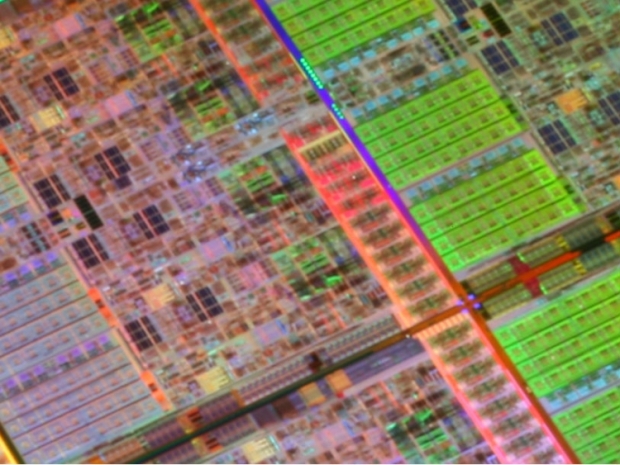At CES 2017, Intel’s CEO announced that the company planned to start shipping the eighth generation Core architecture later this year. Later usually means the second half of the year, and Intel has some serious problems migrating to 10nm with its Core architecture. The eighth generation Core architecture is a 10nm Cannon Lake part, but it should first debut in notebooks.
The 10nm delay puzzled us but Intel might have delayed things for business reasons. The 14nm production and yield numbers are mature and well and 10nm wafers are more expensive. Many do know that Bryan Krzanich, Intel’s CEO, is a fab guy and these guys are focused on profits per wafer more than anything else. This is highly unlikely as going from 14nm to 10nm was expected to be hard for the CPU industry. Qualcomm seems to be doing well to move from 14nm Snapdragon 820 mobile SoC to the 10nm Snapdragon 835 but it is really hard to compare a Snapdragon SoC that has 2 to 5W TDP with Intel’s 65W, 95W and 140W TDP (Thermal Dissipation Power) parts.
Most press, analysts, Wall Street and the industry didn’t believe that AMD had the power to make a comeback product, which is exactly what Ryzen is. Bear in mind that AMD is roughly 10 times smaller than Intel, and this is really a modern David versus Goliath fight. If David wins and forces Goliath (Chipzilla) to drop its prices and stop charging ridiculous money for its CPUs, all hell is going to break loose. The high end processor that Intel launched, the Core i7 6950, just dropped in price on Amazon from its original $1,743.00 to $1,627.99. This is stupid money for a CPU, even if it goes like the clappers with its 10 core CPU . This is all due to competition and suddenly Intel has it.
Remember Nvidia’s $1500 Titan card, that was developed just because they can get away with it?
Never forget that every tech company is in the business of making money. The main goal for Intel, AMD, Nvidia, (insert name of the tech company here) is getting its stock price up. Higher average selling prices or operating margin, something that Nvidia and Apple are famous for, are the keys to financial success. This is why Intel continued to slowly but surely increase the prices of most of its CPUs in performance and the higher end markets. The fastest Core i7 quad core was selling for close to $250, while at launch the Core i7 7700K started at $350 and dropped to $339 without cooler or $370.40 with cooler.
Once every few years, but this time a whole decade, David wins the game. It is naive not to expect that AMD Ryzen won’t lose some benchmarks to Intel, but with great pricing and positioning, AMD is kickstarting its way back to the market.
It is easy to anticipate a shortage of Ryzen CPUs as the initial demand is overwhelming. Fudzilla didn’t like the fact that AMD didn’t send out review kits to align with sales. End users or press/analysts don’t know if Ryzen really is as good as is claimed. Reviews are still scheduled for the future - probably to align with the availability and start of sales that is announced on 2 March.
Intel’s answer to Ryzen is Canon Lake with its eighth generation Core. The company just announced Core i7 7700K and the rest of the Kaby Lake 14nm line up. This was the first time in history that Intel broke its "tick-tock" tactics. Kaby Lake is the third generation 14nm core, and this has never happened before.
Broadwell (Tick) was the first 14nm chip for Intel. The way to see Broadwell is that the CPU had a foundation based on the Haswell (22nm) architecture, but it was manufactured in 14nm.
This was followed with a brand new architecture codenamed Skylake another 14nm processor. Skylake (Tock) introduced a few new things, but again nothing spectacular as Intel has been competing against itself and didn't have to make an effort.
Kaby Lake, the third generation 14nm processor, is an optimised and refreshed Skylake with slight improvements in CPU and more improvements in the video/GPU department. This is neither Tick or Tock, this is a refresh, or a further optimised 14nm processor, as Intel failed to move to 10nm in time.
This is the main reason why AMD can compete with Ryzen. Intel must be having a lot of urgent meetings in the desktop department right now. People might think that desktopa are becoming less relevant, but even today, most enterprises in the word still use desktopa as they don’t want their employees to take valued data home with them. This is not going to change anytime soon.
Gaming is another big market. According to Superdata Research, PC gaming was a $36 billion market in 2016, something that is hard to ignore. Now AMD is going to byte into a chunk of that, and of course the chunk means less meat in Intel’s pie chart.
AMD will win some market share, starting in Q1 and exploding in Q2 and onwards, at least while Intel doesn’t reduce its prices. But even with a significant price drop, we have thousands of readers that just want to buy AMD, and AMD only. The Ryzen performance scores will definitely help that decision and AMD’s path back to success. A year ago, AMD's stock price was at $1.8, and today at press time, AMD is at $14.28 up $0.28 or two percent while Intel's is at $36.07 - down $0.45 or 1.23 percent.




